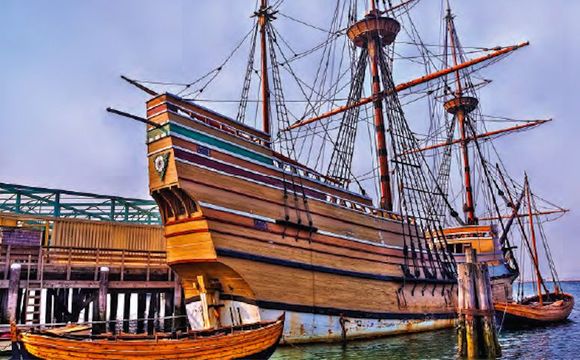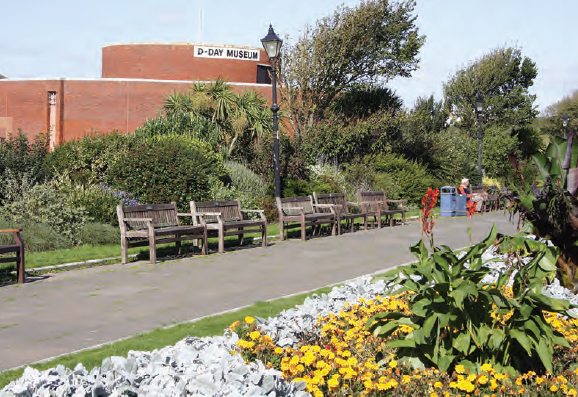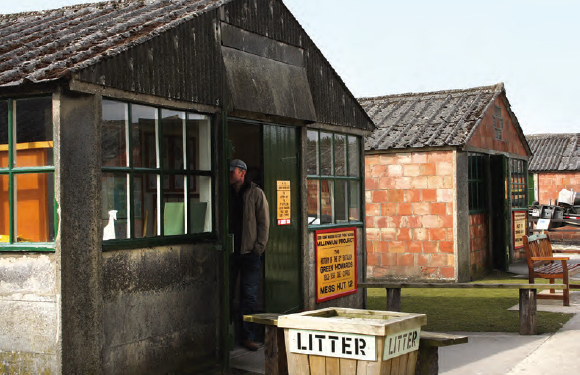
Our Heritage of History
Last issue, I wrote about Britain as defensibly the most important international travel destination for Americans to visit—and of the enriching experience of heritage travel. The lessons I have learned personally are profound.
Traveling in Britain over the past several decades, perhaps the biggest surprise I’ve found is how much of America’s history I learned there that is largely lost from our general knowledge on this side of the Atlantic. It’s not that I set out to learn it; I just picked it up along the way.
A good case in point might be in the continuing coverage BHT has given the saga of the Mayflower—including the story in this issue of the origins of what we know as the Pilgrims, who sailed aboard the small ship to settle Plymouth Plantation in 1620. We have given the same kind of coverage in the run-up to the historic 400th anniversary of the Pilgrims’ sail as we did for the 400th anniversary of Jamestown in 2007.
Admittedly, my own interest in the tale of the Mayflower Pilgrims stems from the fact that I had seven lineal ancestors aboard Mayflower. Both sides of my family arrived in New England in that first generation. While we learned about the Pilgrims in school, in fact, some 30,000 Puritans had left England for these shores by 1640—most from East Anglia and the East Midlands. They came because of what was happening in England during those years.
[caption id="" align="aligncenter" width="578"]

DANA HUNTLEY
Down in Virginia, Jamestown struggled along for a generation. Then, between 1640 and 1660, Virginia bloomed and thrived under Gov. William Berkeley—once again because of current events in England. Of course, Virginia went on to be the most populous and wealthy of the 13 colonies, spawned the Carolinas and Georgia, and became The South.
Those decades of the early 17th century saw the rise of Parliament and Puritan political power in opposition to the King (and largely both the secular and ecclesiastical aristocracy). The result was the English Civil War and its aftermath, from Commonwealth to Restoration. The Puritans settled New England; the Royalists settled Virginia. Amazingly enough, the differences in their social order, economic organization and worldview explain differences between Northern and Southern culture that persist today.
That story, however, is found in England—in Oliver Cromwell’s House in Ely, Newark’s new National Civil War Centre, Carisbrooke Castle on the Isle of Wight and the manor of Llancaich Fawr in South Wales, among scores of battlefields, scarred churches and slighted castles. There is always a story.
In the 150 years between settlement in Massachusetts Bay Colony and the War of Independence, the colonization of our Eastern seaboard and those who made the Atlantic crossing to settle here were directly the effect of causes in England and Scotland. And the rest is history?
Three centuries after the settlement of New England and Virginia, World War II shook the world. This is a story more immediate and palpable. Our parents and grandparents lived through those years and fought that war beside the United Kingdom. As it had been in World War I, however, we fought the war at a distance, while Great Britain was the front line. Millions of American and Canadian servicemen served from English bases preparing for the invasion of Normandy, flying from East Anglian airfields or putting in to British ports.
The stark reality of that war and its impact upon the generation that lived through it—and the world for generations yet unborn—comes alive in England in ways undiscovered in the books and stories told by our parents and grandparents—itself a rapidly passing generation.
Perhaps nowhere tells the war’s story more completely or graphically than Eden Camp near the North Yorkshire market town of Malton. Within the grounds of a POW camp built to house German and Italian prisoners of war, rows of concrete block huts overlooked by guard towers re-create the war’s history in chronological order from battle to bombings to life on the home front.
Get a different perspective entirely at the American Military Cemetery in the Cambridge suburb of Madingley. Its ordered gravestones mark the remains of 3,812 servicemen, many of whom died flying over Europe or on convoy duty in the North Atlantic. The Wall of the Missing records the names of 5,127 more who became the missing.
[caption id="EntwinedandEngaged_img4" align="aligncenter" width="653"]

DANA HUNTLEY
Most of those airmen flew from airfields that dotted the flat East Anglian and Lincolnshire countryside. Some 10 miles south of Cambridge, visit Britain’s largest air museum, IWM Duxford, on one of those airfields. Its seven huge permanent display hangers include the American Air Museum, telling their story. Portsmouth’s D-Day Museum, Churchill’s Cabinet War Rooms under the streets of Whitehall, the secret code-breaking base at Bletchley Park and the bombed ruins of Coventry Cathedral: World War II is as ubiquitously present across England as our own Civil War is across Northern Virginia.
In fact, American history is entwined with Britain’s at every turn for the past 400 years. We who are readers have been absorbing that legacy all our lives. There is a difference, though, between reading about historical events—of church, state, war, industry or culture—and experiencing where it happened. From the Houses of Parliament to the bleak moor of Culloden, at Ironbridge Gorge, Quarry Bank Mill and the valleys of the Rhondda, in Whitby Abbey, the Epworth Rectory and Liverpool’s Cavern Club, we engage a past that informs our lives today. It is a rewarding engagement, indeed.





Comments